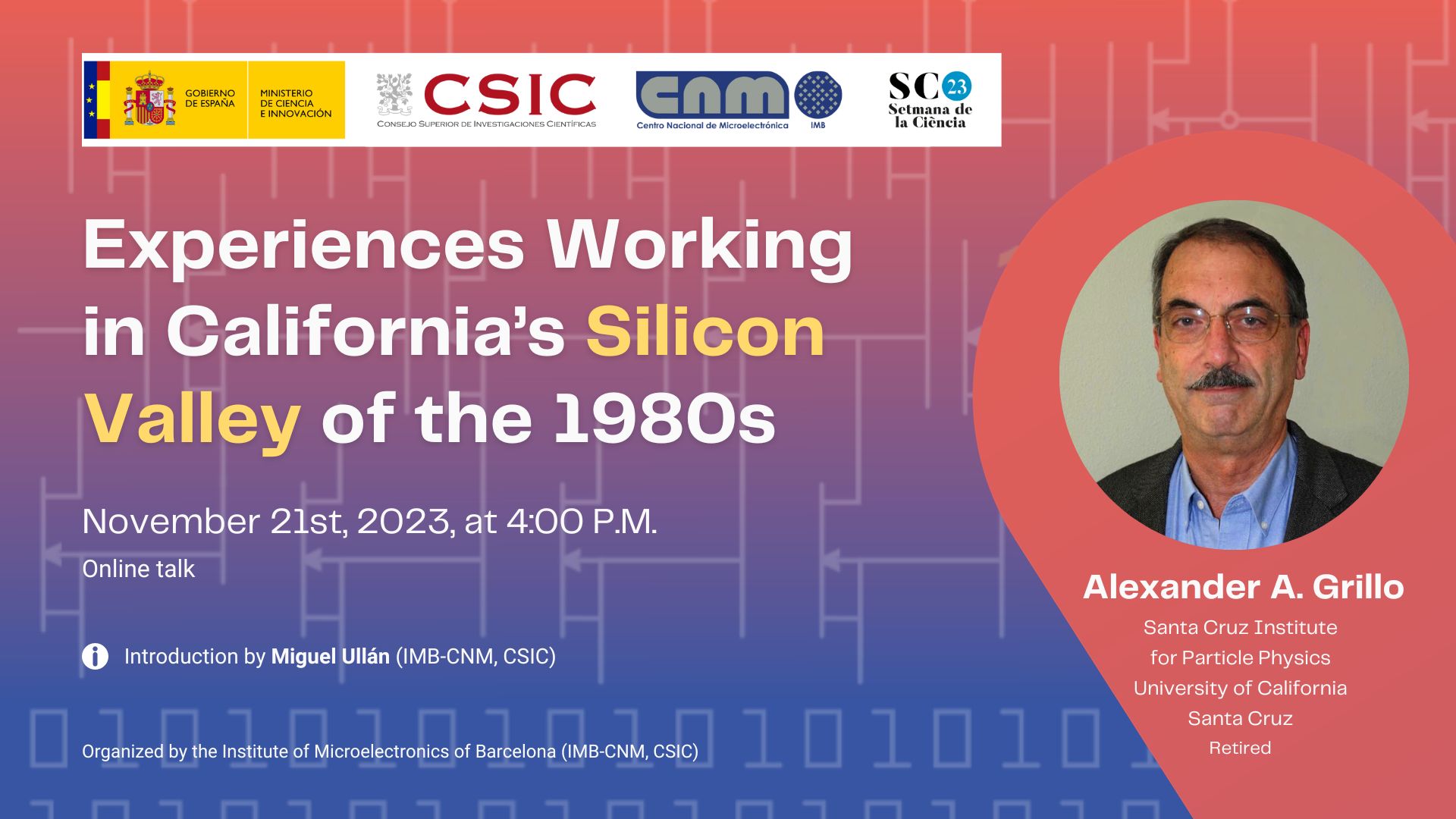Xerrada en línia en anglès amb motiu de la Setmana de la Ciència 2023.
Experiences Working in California’s Silicon Valley of the 1980s
By Alexander A. Grillo, Santa Cruz Institute for Particle Physics, University of California Santa Cruz. Retired.
Introduction by Miguel Ullán (IMB-CNM).
About the talk
The southern part of the San Francisco Bay Area has been the birthplace for many electronic innovations throughout the 20th century and into the 21st. The first radio station in the United States with regularly scheduled programming started in San Jose in 1909; William Shockley set up his Shockley Semiconductor Laboratory in Mountain View in 1956; both cities are in the Santa Clara County of California. Roughly 1970 is typically considered the beginning of what became known as Silicon Valley because of the number of electronics companies supporting each other and competing against each other within the geographical area called Santa Clara Valley and the governmental boundary area of Santa Clara County. The funding for this innovation and growth came largely from venture capital groups, many of which had offices in the same valley. By 1980, much of the necessary structure and protocols for doing business had been established, some of those companies still exist today, some do not. The industry still had much growing to do, new tools to be perfected and advances beyond believed physical limits to be achieved, in order to create what we understand the industry to be today.
"I will review my experiences working in Silicon Valley in the 1980s, experiences in two so-called “startup” companies and in one of the standard bearers, Intel Corporation. I hope to provide a view of what work in this environment was like then, what were some problems still being worked and the whole “startup” experience, which had many differences from working in a well-established company".
About Alexander A. Grillo
Alexander A. Grillo earned his BS degree with a major in Physics at Stanford University, graduating with distinction and elected to the national honorary Phi Beta Kappa Society in 1971. He later served as the president of its chapter at the University of California Santa Cruz where he was employed. He was awarded a Ph.D. in experimental particle physics by the University of California Santa Cruz in 1980. His thesis was based upon an experiment performed at Fermilab in Illinois. In addition to the normally required full physics analysis of his data, his involvement in the project included early planning, design of the detector systems, electronic readout and sole author of the real-time data acquisition software. Given that experience in instrumentation, he was offered a job in the burgeoning Silicon Valley while still completing his thesis. Over 13 years, he worked for two startup companies and the well-established Intel Corporation. This was in the relatively early years of what became the world-wide electronics integrated circuit and computer industry, when the 8080, 8086 processors were the workhorses and the 80386 was trying to break into production. At the approval to build the Superconducting Super Collider (SSC) in the US, he was offered the opportunity to return to academia, joining a team at UC Santa Cruz to co-lead the construction of its silicon tracker due to his experience in the IC industry complemented by his physics background. Upon the abrupt cancellation of the SSC project, Grillo and his UCSC team, along with other US institutions, joined collaborations of the Large Hadron Collider at CERN in Geneva, Switzerland. As a member of the CERN ATLAS collaboration, he was asked to coordinate the development and construction of the electronics for the Semi-Conductor Tracker (SCT) of the ATLAS Inner Detector (ID). That effort was very successful as demonstrated by that detector successfully operating for well beyond its 10-year target lifetime. Before retirement, Grillo moved his efforts to develop the successor of that ATLAS ID, that is the ATLAS ITk.
He has co-authored over one hundred papers in particle physics, instrumentation for particle physics, and IC testing and failure analysis, contributed a chapter to the book Extreme Environment Electronics and co-owns one patent regarding the Magnetic Bubble Memory Technology.





